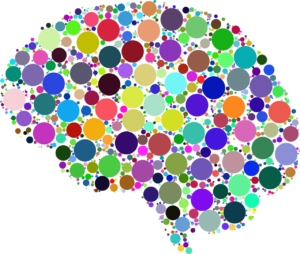Is this addiction leading to lack of focus and depression?
A few months ago while driving to a meeting I heard Catherine Price, author of “How to Break up with your Phone” interviewed on NPR radio. I was intrigued with the interview and immediately put her book on my wish list. Then a couple of weeks ago I saw her book mentioned again on a newsfeed I follow. Okay, I thought, time to buy the book!  I have been interested in how our smart phones and other wireless mobile devices are affecting our brains and happiness levels for some time now. In a blog post from a few years ago, I wrote about this topic after I attended a forum with journalist Nicholas Carr, author of “The Shallows: what the internet is doing to our brains”.
I have been interested in how our smart phones and other wireless mobile devices are affecting our brains and happiness levels for some time now. In a blog post from a few years ago, I wrote about this topic after I attended a forum with journalist Nicholas Carr, author of “The Shallows: what the internet is doing to our brains”.
Life has drastically changed with the introduction of smartphones. I love that I can easily check the weather in the morning, track my steps for the day, get directions to wherever I need to go, and research a good lunch place with my iPhone. But there are also a lot of downsides, like people just don’t interact with each other much anymore. Does anyone remember when the airport used to be a great place to people watch? Now it is so uneventful, everyone is looking down at their phones. We used to talk to the people around us on the airplane – at least sometimes! And no one looks out the window anymore when flying. All windows are shut to reduce glare on tablets. But there is so much to see when looking out the window of an airplane! And so much to contemplate…like I can’t believe I am flying at this altitude…how crazy is this! What a perfect time to let ideas go wild and get the creative juices flowing.
According to Catherine Price’s new book, Americans check their phones about 47 times per day and the average is 82 for people between 18 and 24 years. She also cites that we are spending more than 4 hours a day on our phones and 80 percent of us check our phones within a half hour of waking up. How do you relate to these statistics? I thought I didn’t fit into these statistics…after all, I was aware of all this stuff…I didn’t have a problem. Well, after starting Catherine Price’s 30 day break up plan, I realized that I do have an addiction to my smartphone. I often reach for it mindlessly, without purpose, and check my email far too often. It has had a huge impact on my brain. My ability to focus has declined; I am easily distracted. It has become harder to complete projects on time. I have developed OCD over the number of steps I take each day. My addiction to my wireless mobile devices has started to erode my creativity and rob me of my clarity.
I remember when neurologist and researcher Dr. Dale Bredesen said during one of his trainings that adult ADD or ADHD can be a first sign of Mild Cognitive Impairment and Alzheimer’s Disease. Wow, I was surprised. But it makes sense. If we are not using the areas of our brain responsible for concentration, then those neural circuits will weaken over time and we end up constantly distracted and forgetting things. And when we use our smartphones, we typically are not in deep thought, concentrating really hard, or memorizing anything. We are skimming! Repetition and practice are what strengthen neural circuits. So what happens when we are skimming through information for minutes at a time on our phones all day long? We are weakening our neural circuits for memory and concentration and strengthening our circuits that encourage distraction and forgetfulness.
In Dan Buettner’s The Blue Zones of Happiness You Tube video, he says that a commonality among the happiest cultures in the world is that they socially interact face to face 6 hours per day. How much time are we spending on social media and NOT interacting in person with family, friends, colleagues, or even strangers? No wonder all these studies and reports are coming out that Americans are more isolated and depressed than ever…especially teenagers who are growing up with smartphones wired to them at all times, even when they sleep.
If you find that you don’t do the things that really nourish you and bring you joy as often as you used to, this is the time to assess your relationship with your smartphone or other wireless devices. I discovered that I don’t read as many novels as I used to or explore new music and recipes as much, and I certainly don’t talk on the phone with friends like I used to!
If you own a wireless mobile device, which is highly likely, unless you are reading this blog at a public library on a shared desktop, then I highly recommend reading Catherine Price’s book How to Break up with Your Phone. It is one of the best books that you will read this year. The intent of the book is not to throw your phone out, it is to help you have a healthy relationship with it, so it becomes a tool to help you create the life you desire, NOT the life that smart engineers, marketers, and social media giants want for you!
 A few years ago, scientific research finally confirmed that the brain also has a drainage system. This drainage system is now officially named the glymphatic system. The glymphatic system is most active while we are sleeping deeply. It drains toxins and debris while we are fast asleep. Among the debris it removes is beta amyloid protein. The less sleep we get, the less beta amyloid clearance. In fact, a recent study showed that just one night of sleep deprivation resulted in a significant increase in amyloid beta in the brain.
A few years ago, scientific research finally confirmed that the brain also has a drainage system. This drainage system is now officially named the glymphatic system. The glymphatic system is most active while we are sleeping deeply. It drains toxins and debris while we are fast asleep. Among the debris it removes is beta amyloid protein. The less sleep we get, the less beta amyloid clearance. In fact, a recent study showed that just one night of sleep deprivation resulted in a significant increase in amyloid beta in the brain.


